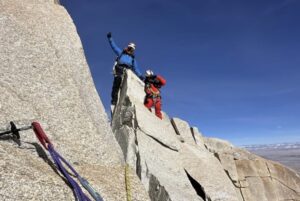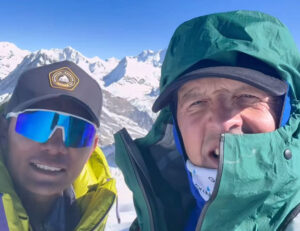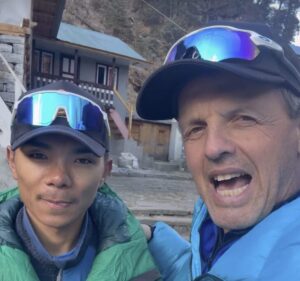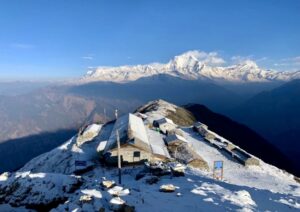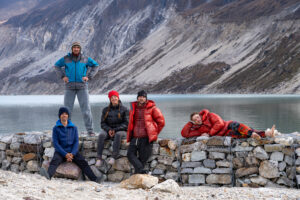Over a hundred climbers who expected to fly back to Kathmandu from Manaslu to celebrate their summits will have to wait. Local villagers have barred helicopters from flying. They are fed up with the government refusing them permits for emergency airlifts when injured or sick, while foreign tourists use the service without restrictions.
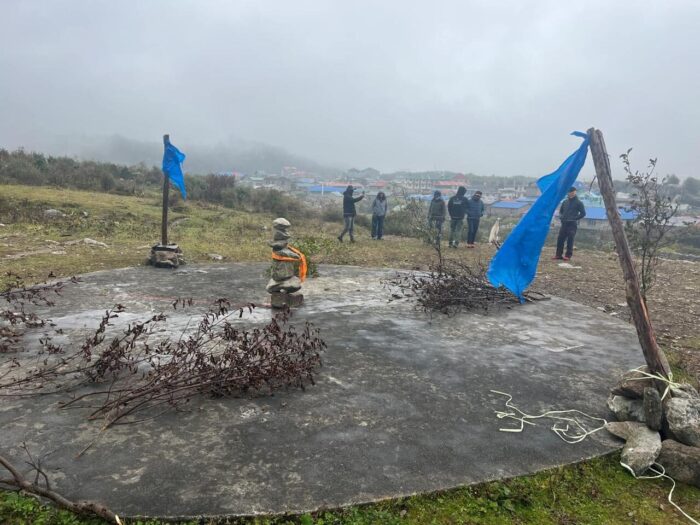
Locals covered the helicopter landing pad at Samagaun with branches. Photo: Rajendra Bajgain
Sick locals neglected
Most Manaslu summits occurred today, with climbers taking advantage of the freshly open route before a major storm hits the mountain this week. Almost all of those who summited in the last three days remain in Base Camp. Now they will have to wait, or walk down the valley when the weather allows.
Still, local operators in Base Camp are understanding.
“Though inconvenient to our operations, the expedition operators and all stakeholders agree that the cause is just. The government needs to make sure their citizens are not treated as second-class,” Dawa Steven Sherpa of Asian Trekking told ExplorersWeb. “We all know of cases of sick locals and pregnant women losing their lives waiting for flight permissions.”
Restricted zone
Most of the Manaslu area bordering China is a restricted zone. This makes obtaining an airlift permit difficult. Additionally, restricted areas are profitable for Nepal’s government because foreigners are required to pay a trekking permit to enter.
Therefore, local authorities around Manaslu are demanding that the government remove the region’s villages from this restricted zone. If their demands aren’t met, they are ready to stop helicopters from landing indefinitely.
The District Administration Office in Gorkha made public an open letter requesting the Federal Capital, the Government, and the Home Secretary’s Office to address the demands of the local authorities.
“Airlifts are a local’s final lifeline,” member of parliament Rajendra Bajgain told ExplorersWeb. Bajgain represents Gorka 1 district and knows the problem first-hand; he has personally arranged several emergency airlifts for neighbors in trouble.
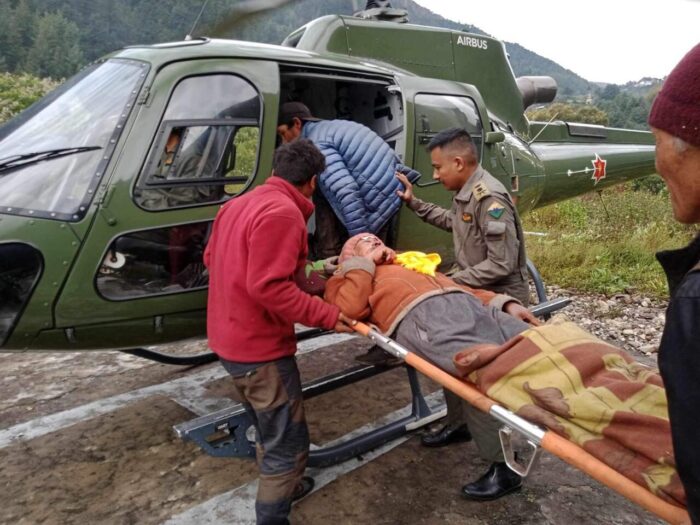
An army helicopter rescues a sick villager. Photo: Rajendra Bajgain
Bajgain explained that the area was restricted to prevent the Khampa guerillas from smuggling arms into Tibet during the 1959 uprising.
“But that conflict is long over and the highlanders of this mountain area are farmers with small pieces of land. They are very poor,” he said.
Most of the settlements in the Tsum Nubri Rural Municipality are isolated, far from medical facilities or even roads.

MP Radendra Bajgain.
Too long to wait
The restrictions mean that helicopter companies need a special permit to fly. This can take days to obtain. The permit process is something that helicopter companies are not keen to go through, and that sick locals usually cannot afford.
“But the foreigners have easy access,” Bajgain said. “Locals are only asking for their basic rights. They are also humans, and the government must come up with a solution so local people can freely fly out of the area when in need.”
That is the responsibility of the Civil Aviation Authority of Nepal (CAAN) and the Ministry of Home Affairs. Bajgain also noted that most helicopter companies prioritize foreign tourists over locals. Finally, Bajgain demands that CAAN allow helicopters that drop foreigners on the mountain and return empty to pick up locals on their way back.
Two years ago, Spanish climber Alex Txikon was on his way back from Manaslu by helicopter. En route, they picked up a pregnant woman in labor during a refueling stop at Samagaun. She gave birth to her baby in the helicopter.
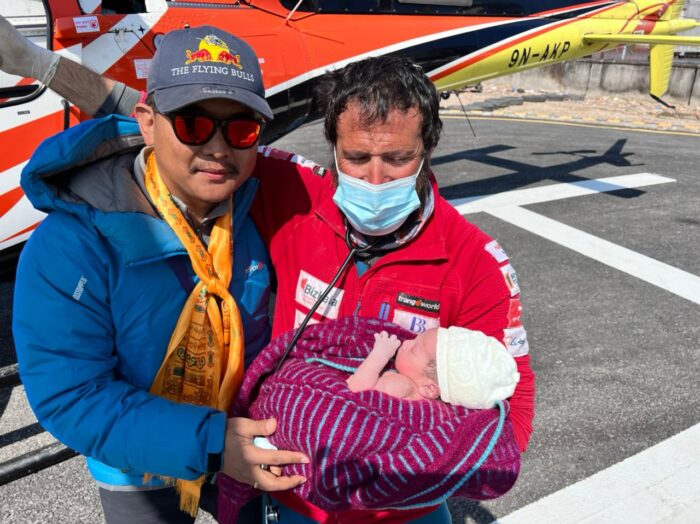
Alex Txikon and the helicopter pilot with the baby that was born during the flight from Manaslu to Kathmandu. Photo: Alex Txikon
What will happen to the climbers?
The ban is not causing life-threatening problems for anyone in Base Camp. Luckily, no one needs evacuation. There have been no accidents to report and most climbers were expecting to spend a few days in Base Camp anyway because of the approaching storm.
“I had told my clients before the summit push that the weather would turn bad for many days. [I told them] to be mentally prepared to wait until the end of September if they want to fly out,” Dawa Steven said. He noted that some of his clients are taking it easy in Base Camp, including runners Tyler Andrews and Chris Fisher, while others have opted to walk down to Samagaun village and wait there.
“We are also looking at our options. [We could walk] to a lower village from where the climbers are allowed to fly if this issue is not resolved quickly,” Dawa Steven said. “Because of bad weather, it’s dangerous and difficult for mules and porters to travel the trekking routes, so the clients have to wait anyway.”
Whatever the outcome, the protest has fulfilled its primary goal of drawing the government’s attention.

